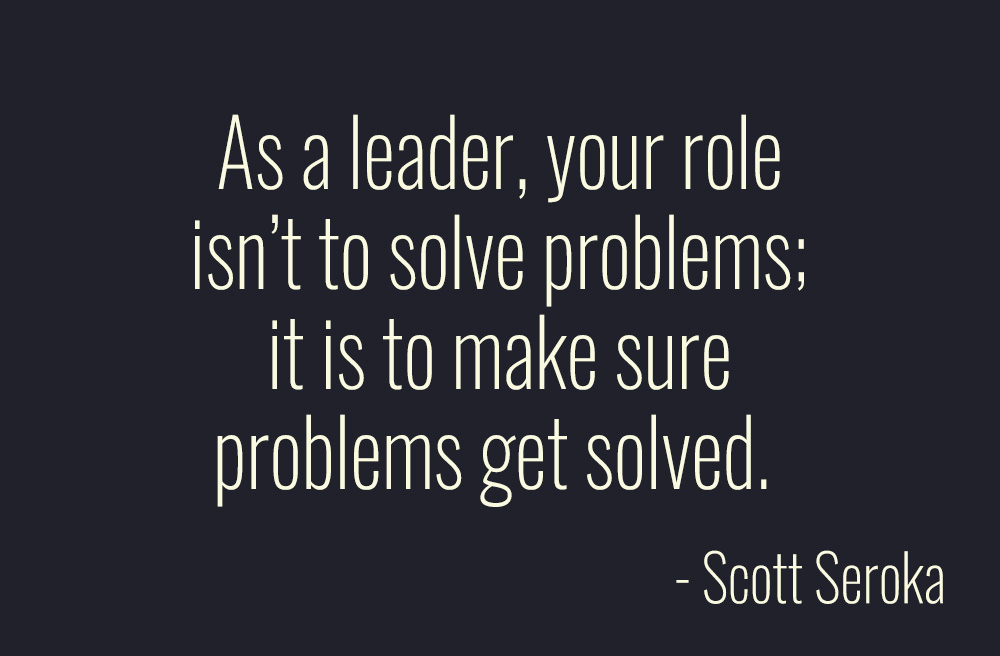 If you give this a moment’s thought, leadership is actually quite simple. Employees want the very same things their leaders want: opportunities, autonomy, respect, to be heard. etc. And if employees perform and produce to expectations, these requests are fair and realistic. Would you agree? However, each and every employee, no matter how professional and friendly they are, are also in a constant pursuit of getting their needs satisfied. When something or someone gets in their way, it creates conflicts (people problems), and problems not properly resolved will disrupt an entire team.
If you give this a moment’s thought, leadership is actually quite simple. Employees want the very same things their leaders want: opportunities, autonomy, respect, to be heard. etc. And if employees perform and produce to expectations, these requests are fair and realistic. Would you agree? However, each and every employee, no matter how professional and friendly they are, are also in a constant pursuit of getting their needs satisfied. When something or someone gets in their way, it creates conflicts (people problems), and problems not properly resolved will disrupt an entire team.
Here is a simple truth about leadership: it is not your responsibility to solve problems between people. In fact, your involvement will likely do much more harm than good, even if you believe you have the perfect solution to fix everything and get everyone back to work again. And the reason is simple: As you do not have the full, unbiased insight into the source, details, politics and personalities surrounding every problem, you are usually not in a good position to offer any kind of solution. As a leader, your role isn’t to solve problems; it is to make sure problems get solved.
This is most effectively done through the following process:
1. When you become aware of a problem, immediately determine who owns the problem. Either you own the problem, the other person owns the problem, or you both own the problem. Making this determination immediately is critical because, let’s face it, the last thing you need on your plate is a problem to solve that isn’t yours.
2. Assuming that it is the other person and not you who owns the problem, your next step will be to invite the person (the sender) to talk about the problem while you act as a sounding board and acknowledge your understanding through Active Listening. This provides the sender with the confidence that s/he is being heard as you listen with understanding and empathy.
3. As you do not own the problem, your role is to facilitate the problem solving process so that the sender can resolve his/her own problem. Be careful not to roadblock communication; in other words, avoid any and all temptations you may have of leading the conversation in any direction, even if you know you have the perfect solution. Leading doesn’t help you, or the sender, or the problem. Worse, leading will brand you as the office problem-solver which is an absolutely miserable and thankless role.
I recall the day when I was anointed with my first leadership position, and my manager told me that my role was to “get rid of problems” in the office. I had no leadership training whatsoever, and all I remember was the amount of stress I took home every day, constantly worrying and thinking about the daily frustration and futility of telling people to play nicer in the sandbox. The results of this leadership style were 90% ineffective, and I eventually resigned.
Now that I have learned about problem ownership and some communication and conflict resolution skills, I feel much more confident about dealing with the inevitable daily issues and problems that arise.

